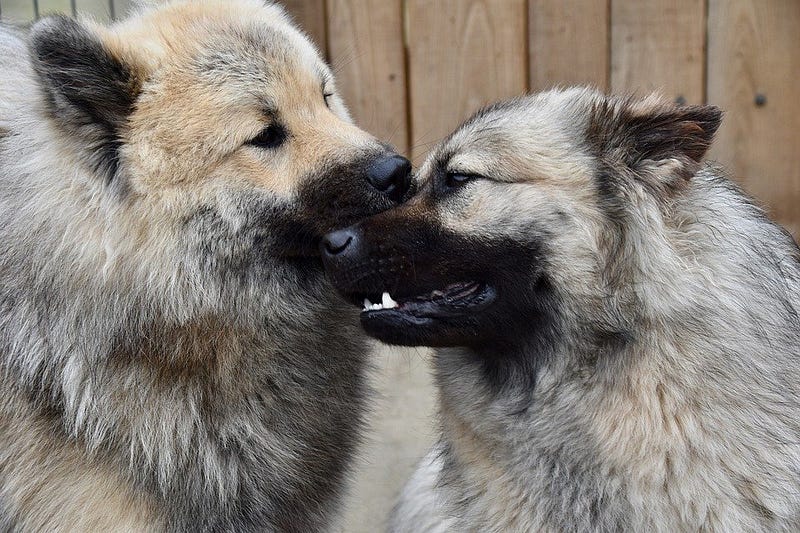Acting like a dog in heat? More like a human in oestrus
By Maya Krause, Environmental Science, 2022

Some people like to believe our species has evolved away from more primitive behaviors, but when it comes to reproduction, we may not be so different from other animals. Most female mammals have a time period in their reproductive cycle called heat, when they are the most sexually receptive and prepared to mate, which occurs just before ovulation. The hormones produced by the animal at this time increase sexual receptivity, which are behaviors and other characteristics that assist the female in fertilizing her eggs. In the scientific community, this phase is called oestrus. Different animals express oestrus in different ways; for example, female dogs give off an odor that attracts male dogs to her, and female cats will tilt the back of their pelvis up in a position called “lordosis,” which aids in reproduction.
It was long thought that humans had evolved away from the oestrus phase and that women no longer have hormonal shifts that result in behaviors related to sexual receptivity. The thinking went, because women have lost oestrus, they are potentially constantly sexually receptive and are able to be impregnated at any time during their reproductive cycle. The leading theory as described by Heistermann et al. states that humans lost oestrus in order to conceal paternity and reduce infanticide by male partners. If a woman is able to be impregnated at any time, and she has multiple partners, there would be no way for early human males to know whether the child was his offspring or not, and would be less likely to kill the child for not being his.
The thinking went, because women have lost oestrus, they are potentially constantly sexually receptive and are able to be impregnated at any time during their reproductive cycle.
Recently, however, the theory of human females losing oestrus has been called into question. According to Steven Gangestad and Randy Thornhill from the University of New Mexico, women’s sexual desires change during the part of the menstrual cycle when they are most fertile. In particular, women are more selective towards traits that ancestrally connoted male genetic quality and high testosterone (strong jaw, dominant behavior, deep voice, tall height) when they are in the fertile part of their menstrual cycle as opposed to when they are not fertile.
Additionally, Haselton et al. found that women dressed more attractively or provocatively when they were near ovulation. The changes in desires are not isolated to tendencies towards male traits, either. Lisa Diamond and Kim Wallen found that women who identified as lesbian showed increased interest in sexual contact with women when they were ovulating. These shifts indicate that sexual receptivity increases when a woman is in the fertile part of her cycle — evidence that women have retained oestrus.
Additionally, Haselton et al. found that women dressed more attractively or provocatively when they were near ovulation.
Fortunately, all hope is not lost for heterosexual men without traits that indicate high testosterone. Gangestad and Thornhill’s research found that fertile women seek out men with such traits as short term partners. There was no change across the cycle in women’s attraction to men who they perceive to be intelligent, kind, or financially successful. This research suggests that women in oestrus are more interested in sex for lust as opposed to intimacy or emotional connection.
The theory proposed by Heistermann et al. for why humans lost oestrus is not discarded in Gangestad and Thornhill’s research. In fact, Gangestad and Thornhill wrote that women’s cycles have evolved to be able to conceal paternity while also being selective. If a woman is able to have multiple partners outside of her most fertile time period, but maintains selectivity when most fertile, she can increase the chances that her offspring will have the most desirable traits while decreasing the chances that her offspring will be killed by another mate. This exact pattern was observed in human’s closest relative, the chimpanzee, by Rebecca Stumpf and Christophe Boesch.
Contrary to prior beliefs, women’s desires while fertile play a large role in selectivity and reproduction. Evolutionarily, oestrus served to increase the chances of birthing a child with genetically desirable traits who would not be killed by a non-parental male. Today, these selective behaviors lead to fertile women seeking out short term relationships more readily. While humans do not express their lust as blatantly as cats and dogs, it is clear that women have not lost the sexual receptivity that comes with being in heat.
The Royal Society (2008). DOI: 10.1098/rspb.2007.1425
The Royal Society (2001). DOI: 10.1098/rspb2001.1833
Evolution and Human Behavior (2010). DOI: 10.1016/j.evolhumbehav.2010.05.003
Hormones and Behavior (2007). DOI: 10.1016/j.yhbeh.2006.07.007
Behavioral Ecology and Sociobiology (2004). DOI: 10.1007/s00265–004–0868–4
Archives of Sexual Behavior (2011). DOI: 10.1007/s10508–010–9631–2
